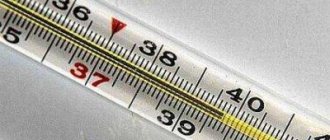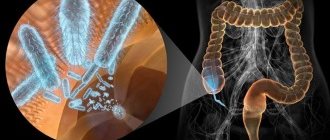How long a person is contagious
The incubation period is from 15 hours to a week. More often – 1-4 days.
People are contagious when they first show signs of the disease. The risk of infection remains after recovery. A person is contagious after rotavirus for several days. After 3-4 days the patient is no longer contagious.
The most contagious period is at the peak of the disease. The sick person is isolated - put in quarantine.
It is important to keep the sick person away from unvaccinated children. Quarantine for intestinal infections must last for at least 7 days. If a child in their kindergarten becomes ill, the group is closed for a week.
Nutrition for adults with rotavirus infection
- dairy
- fried, fatty, spicy foods
- spices and seasonings
- fast food and snacks
- coffee, carbonated drinks
- legumes
- baked goods
- sweets
- fresh fruits and vegetables
During the first days of illness, do not fast. The patient should receive food in fractions in the form of:
- rice porridge on water
- semolina porridge on water
- boiled lean meat
- dried fruit compote
- low-fat fermented milk products
Rice porridge with water without oil is a dish for rotavirus.
For another 2-4 weeks after the symptoms of “intestinal flu” disappear, the patient should be on therapeutic diet No. 1, indicated for diseases of the gastrointestinal tract.
https://youtu.be/WsqASK-1ylw
Danger of disease
Rotavirus infection (intestinal/stomach flu) is an acute intestinal infection caused by a virus from the genus Rotavirus. In 95 out of 100 cases, watery diarrhea in young children is caused by rotavirus. The disease causes diarrhea, vomiting, and leads to dehydration.
Fluid reserves in the baby's body are limited, it is important to prevent dehydration. When rotavirus infection occurs, the child’s blood supply and proper functioning of internal organs are disrupted.
There should be water nearby. Call a doctor at home. The doctor will decide whether the patient should be admitted to the hospital or home treatment is sufficient.
After consulting with your doctor, find out about the prescription of anti-nausea and vomiting pills for your child. The tablets will help withstand the symptoms of the disease and reduce water loss to avoid dehydration.
With proper treatment, rotavirus lasts up to 1.5 weeks and leaves no consequences.
How many days is rotavirus infection contagious after contact with a sick person for adults?
Another danger lies in possible intestinal damage. In some patients, inflammation of the intestinal wall reaches such a degree that an admixture of blood appears in the stool, and the temperature remains at 39 and above, not being reduced by antipyretics.
This picture means the development of complications and requires immediate hospitalization of the patient. Uncontrollable vomiting is also an indication for hospital treatment. Vomiting is a sign of intoxication and a signal that the body is poisoned by waste products of the pathogen.
Complications after rotavirus infection can affect the digestive, respiratory and cardiovascular systems. The mortality rate from rotavirus reaches three percent.
The development of symptoms occurs very quickly. The general condition of the patient is lethargic, activity and performance are reduced, and there is no appetite. Vomiting and diarrhea lead to dehydration, the skin becomes pale, the mucous membranes are not sufficiently moisturized, lips are cracked, and the tongue is coated with a white coating. But not all cases exhibit such obvious classic symptoms.
Sore throats are sometimes observed, especially in children, which is why intestinal flu is often confused with sore throat. In these cases, the patient is bothered by a mild dry cough, rhinitis with swelling of the nasal mucosa, the tonsils and lymph nodes become inflamed and increase in size, inflammation of the conjunctiva leads to redness of the eyes and lacrimation.
It is also possible for the disease to be asymptomatic. In this case, the person does not have any clinical signs of the disease, but carries the pathogen and excretes it with feces into the external environment.
Loading …
In children, the disease has its own specifics. In young patients, as in adults, all intestinal symptoms can be expressed, but often they are accompanied by damage to the ENT organs. Sore throat is a common symptom accompanying rotavirus infection in children. A runny nose also appears, and cases of otitis media are not uncommon.
Children often become infected with rotavirus infection because they still have little control over themselves, put dirty hands in their mouths, and examine unfamiliar objects. Children are inquisitive, spontaneous and not fully accustomed to hygiene, so their contact with infection is more likely. In addition, the immune system of children is not formed, so a child is more likely to become infected with rotavirus than an adult.
Doctors are often asked the question: is it possible to become infected with rotavirus again after being ill, and how long can you rest assured that infection will not happen?
Unfortunately, immunity to rotavirus infection is not stable and lifelong, so re-infection is quite possible. Of course, the body of a person who has been ill produces antibodies that remain in the blood for some time, preventing him from getting sick with intestinal flu again. The duration of the antibodies varies.
When a person’s immune system is in good working order, protection lasts for a year or a year and a half. If the general immunity is weakened, then the specific immunity will not be so long and intense; a person can get rotavirus infection quite often. However, repeated illness is still easier to tolerate.
There is an observation that even the incubation period of the disease depends not on the infectiousness of the pathogen, but on the degree of intensity of the immune system. The stronger the immune system, the later the disease will manifest.
A good way to protect against rotavirus is through mother's breast milk. It is known that it is rich in immunoglobulins, which help prevent infection without putting a strain on the child’s own immunity.
It is quite difficult to organize reliable prevention of rotavirus infection, since the pathogen is extremely stable in the external environment, and its spread occurs at an incredible speed. Therefore, we can say that there is no prophylaxis that completely prevents infection. But you can significantly reduce the risk of disease if you follow the following rules:
- If someone sick with rotavirus infection appears in the house, it is necessary to isolate him from healthy family members for about two weeks. Unfortunately, it is contagious to others for so long. If possible, daily quartzing of the premises should be carried out.
- If possible, treat the patient's belongings with heat.
- Under no circumstances should you neglect washing your hands after visiting the toilet. When an infectious person uses the toilet, the viruses remain there for several months. Adults should teach children to practice hygiene and strictly observe it themselves.
- After washing, scald fruits and vegetables with boiling water.
- Drink only boiled water.
- If an epidemic has begun, you should refuse to eat in catering establishments, and after visiting the toilet, treat your hands with soap and disinfectant.
Vaccines against rotavirus infection have been developed. In Russia, only one pentavalent vaccine is used, which contains a combined vaccine strain and promotes the development of immunity, even taking into account possible mutations of the virus. The vaccine is relevant primarily for children, since in the absence of the possibility of specific treatment for rotavirus infection, children are at increased risk of complications.
Although this vaccine is not included in the national vaccination schedule, it makes sense for parents to consider vaccinating their child, since he can catch the virus from anywhere, and its contagiousness is extremely high.
In children's institutions, in transport, and just on the street, the baby runs the risk of contracting the intestinal flu. Vaccination is highly likely to prevent such an unpleasant disease.
Viruses in the patient’s body settle inside cells, so it is impossible to act directly on such a pathogen, which means there are no specific drugs that could kill rotavirus.
Methods of treatment aimed at the pathogen have not been developed, and in the near future, most likely, drugs whose mechanism of action would allow them to penetrate into the cell and destroy the virus will not appear.
The doctor may prescribe drugs to boost immunity, as well as drugs for symptomatic therapy, but the key to successful treatment is the patient’s rest and sufficient fluid intake to prevent dehydration.
The patient should be in a well-ventilated area, where daily wet cleaning is carried out using disinfectants. In mild cases, treatment can be carried out at home; in severe cases, hospitalization is required.
How can you become infected with rotavirus infection? Infection of a person with rotavirus begins with the microbe entering the body through the mouth, after which the infection begins to actively multiply, reaching the gastrointestinal tract.
You can become infected simply by drinking water that contains the infection, or by eating contaminated food. But the main source of transmission of the virus, especially in public institutions, is hands when personal hygiene rules are not followed. The virus can survive on dirty hands for more than 4 hours.
You can become infected both from an already sick person and from a healthy person who is a carrier of the virus.
- First of all, it is necessary to strictly observe the usual rules of personal hygiene.
That is, wash your hands with soap after toilet procedures, before preparing food and before sitting at the table, after walking and visiting public places. It is extremely important to explain to children that their hands will be cleaner the more often and thoroughly they are washed, which means there will be fewer different germs on them.
- It is necessary to constantly monitor the well-being and health of children, since they are always at greatest risk due to close communication with each other in children's institutions.
Therefore, when the very first signs of the disease appear, it is necessary to inform the staff of the child care institution in a timely manner in order to avoid the spread of the disease to other children.
- Always drink only boiled water, since all microbes cannot withstand temperatures of 100 degrees and die within a few seconds of boiling.
- All vegetables, fruits, and berries must be thoroughly washed in several waters, starting with regular running water (from the tap) and ending with boiled water. You can kill all germs even more effectively if you pour live boiling water over the food, especially if it is intended for the fragile stomachs of children.
- Regularly wet clean the room using germ-killing products. It is most important to disinfect door handles, especially in the toilet room.
To summarize how contagious a person is with rotavirus infection, I would like to note that most of the population encounters rotavirus without even realizing it. Suspicion usually arises in cases where the infection quickly spreads among contact persons. Anyone can get sick, so knowing the characteristics of the disease and how to treat rotavirus infection will help in a difficult situation.
Symptoms
Characteristics of the disease:
- vomit;
- loose stools;
- pain in the upper abdomen.
Symptoms in children
In children, the symptoms are different, but the duration of the disease is similar.
It is worth remembering: for children, due to the imperfection of the immune system, rotavirus infection poses a threat. Dehydration in a child leads to complications including death. If your baby has symptoms, consult a doctor.
When the first signs appear, the disease is contagious. Healthy children, even those who have been ill, are not allowed near the sick person: there is a risk of re-infection.
Symptoms of rotavirus infection for a child:
- lethargy;
- drowsiness;
- weakness;
- dry mouth, lack of saliva;
- dry skin;
- diarrhea;
- nausea;
- vomit;
- stomach ache.
Symptoms in adults
Intestinal flu in adults is easier, complications are less frequent:
- temperature is maintained;
- nausea;
- diarrhea;
- lack of appetite;
- stomach ache.
How is rotavirus infection transmitted?
- Through objects touched by the patient. This route of transmission is the most common, since rotavirus infection is very contagious.
- Through food and water. Even chlorinated tap water can contain viral particles. In some food products, especially those containing milk, the pathogen persists for a long time, and it is extremely difficult to recognize its presence there, since the product does not spoil and looks benign.
- Through the pool. The virus persists in water for a long time.
- The virus can also be transmitted from person to person by airborne droplets. Usually, in this way, the infection is transmitted to others by a child or adult, whose virus is localized in the upper respiratory tract and manifests itself as a sore throat and rhinitis.
Unlike influenza, rotavirus infection does not have pronounced seasonal increases in incidence. Some uptick occurs during the winter months. Doctors explain this by weakening the body due to a lack of vitamins and insolation, which reduces resistance to infections.
Treatment methods
The first thing to do when fighting rotavirus infection is to consult a doctor. He will write out a sick leave. When you are sick, stay at home or in the hospital. Children are in the hospital with an intestinal infection in the infectious diseases department so as not to infect healthy people. Adults are treated at home: the disease is easier, complications appear less frequently. It is recommended to consult a doctor.
There is no specific therapy for stomach flu. Treated by getting rid of symptoms, it is necessary to prevent dehydration. The patient should drink plenty of water daily. The length of stay of a person with rotavirus in the hospital depends on the rate of correction.
Medicines for diarrhea and vomiting will reduce fluid loss and relieve symptoms. They should be used with the permission of the attending physician. Antibiotics and antiviral drugs will not do any good.
After rotavirus, the patient is quarantined for a couple of days: fighting the virus takes longer, and the patient is able to infect a healthy person.
How many days do people suffer from rotavirus infection?
The incubation period of the disease after infection lasts from 12 hours to 7 days.
Therefore, even in an infected person, the disease manifests itself after a certain period, until which he is at first a healthy carrier of the virus, and only after some time becomes ill. A sick person is the main source of infection, since throughout the entire period of the disease and at least another 10 days after apparent recovery, the pathogen is contained in his secretions. The disease manifests itself very acutely with a sudden increase in temperature to 38-39 degrees, general weakness of the body, accompanied by chills.
Before the main stage of the disease, in some cases there may be a runny nose and sore throat with a sore throat that causes a cough. Thus, stomach flu exhibits most of the symptoms of regular flu, which is why it gets its name.
You can find out for sure whether a person is sick with rotavirus infection by passing a special test. But an experienced doctor can make such a diagnosis even on the basis of general symptoms and complaints that are typical for people suffering from intestinal flu.
At the moment, there is no specific cure for this virus, so the main efforts should be directed towards avoiding complications and alleviating the course of the disease. The main thing is to replenish fluid losses through rehydration and detoxify the body as much as possible. To do this, the patient needs to drink water regularly and it is not recommended to take medications for indigestion at an early stage of the disease, as they will only slow down the removal of toxins from the body.
In addition to water, the patient can eat regular food, but should avoid any dairy products, as they will only worsen the infection.
For mild cases of rotavirus infection in adults with mild symptoms, treatment is usually not carried out or ends with simple abstinence from heavy food.
A gentle diet is a fundamental factor in determining how severe the disease will be, because the virus causes a temporary inability in the stomach to digest foods containing lactose. And the severity of the diarrhea that they provoke will depend on the amount of dairy products eaten.
Water should be in the foreground for the patient, and only secondarily can you eat healthy foods: meat broths, boiled vegetables, fresh fruits.
The duration of the disease is influenced by many factors, such as the age of the sick person, his state of health and the presence of chronic diseases that can worsen under the influence of infection. This flu is most severely suffered by infants under one year of age and elderly people suffering from chronic diseases of the renal, cardiovascular and digestive systems.
The first infection, as a rule, occurs in infants when their immune system is developing. The second time a child becomes infected is usually in a preschool institution.
Children under one year of age are most vulnerable to this type of infection. They very quickly develop critical dehydration and a high concentration of toxins, so at the first signs of rotavirus infection you should consult a doctor.
Depending on its severity, it may take up to six months for the stomach to fully recover after an infection. At this time, you should organize fractional meals, and also refrain from dairy, fried and fatty foods.
Once a person gets sick with intestinal flu, he does not receive lifelong immunity to it and can get sick again. This is especially true for children, but each subsequent course of the disease is usually easier to bear.
Stomach flu is a very contagious disease, so if one person in the family gets it, it is very difficult, but not impossible, to protect the people around you from infection. So:
- firstly, the patient must be isolated from other family members;
- secondly, carry out a general wet cleaning of the house by treating all door handles and other surfaces with medical alcohol.
Rotavirus can only be contracted from a person via the fecal-oral route through dirty hands and objects. If an adult or child develops symptoms of intestinal flu, they are immediately isolated from healthy family members. But such a measure, alas, often does not protect, because a person becomes contagious even during the incubation period, from the moment the rotavirus enters his body. An adult remains contagious throughout the entire illness, and sometimes up to 30 days after its symptoms disappear.
In severe cases, the disease can last up to 21 days. In mild forms, symptoms disappear within three to five days. But, in any case, the disease is cyclical and is divided into three main phases.
❖ Incubation period - the time from the penetration of the pathogen into the body until the appearance of the first symptoms. At this stage, the virus is induced into intestinal epithelial cells and actively multiplies, infecting the villi of the small intestine. The latent phase can last from 1 to 5 days. However, most often, after symptoms appear in one member of the family or team, the rest feel the first signs of illness after three days.
❖ Acute form – the period from the onset of the first symptoms to improvement of well-being. Usually, from three to seven days, in severe form and in case of complications - more than a week. The first symptoms appear quite sharply: deterioration in health is accompanied by cramping pain in the abdomen, temperature rises, and vomiting occurs.
Further, diarrhea increases, the number of urges can reach 15 times a day, which is fraught with dehydration. This condition is especially dangerous for young children. Sometimes respiratory symptoms are added to intestinal symptoms. You may experience a sore throat, sore throat, and cough. In this regard, rotavirus infection is often called intestinal flu. In the acute form, viruses are released in huge quantities, and a person in this phase of the disease is especially dangerous.
❖ Recovery period – 4-5 days. Despite a significant improvement in well-being and the appearance of appetite, the person continues to remain infectious to others and needs to follow a diet. A dairy-free diet, water-based porridge, and steamed cutlets are recommended. Spicy, fried, foods with excess fat content can lead to a deterioration in health and resumption of vomiting or diarrhea.
Rotavirus is considered infectious from its first manifestations, that is, from the beginning of the acute phase. However, given the high virulence of intestinal flu, doctors agree that a person can be infectious during the incubation period, but to a lesser extent. If in the acute form you can become infected through airborne droplets and through household contact, then during the incubation period, when the virus is actively replicating, infection of others occurs only if the rules of personal hygiene are violated.
It is conventionally believed that a person who has contracted rotavirus gastroenteritis is infectious from the onset of the disease until the symptoms of illness completely cease. However, it all depends on the degree of contact and the strength of the patient’s immunity. Doctors disagree on how long a patient is contagious with rotavirus.
There have been cases of rotavirus infection both during the incubation period and during recovery. If the immunity of a person in contact with a patient has been weakened, he needs a much smaller number of virus particles to fall ill. Rotavirus grains are sown in feces up to a month after the onset of the disease. Therefore, maintaining personal hygiene rules plays an important role in the prevention of this disease.
How many days is a person contagious with rotavirus infection? According to the Center for Hygiene and Epidemiology, a patient with rotavirus is contagious for five to seven days. However, taking into account the health conditions of different people, the number of antibodies to a given disease and other factors, this figure can be increased to 30 days.
Since the largest number of virus particles are released in the active phase of the disease, quarantine for rotavirus infection in children's institutions lasts 10 days from the moment of the first symptoms of the last sick person. During this period, a thorough sanitation of the premises is carried out.
Individual isolation of a patient with intestinal flu also lasts 10 days, as long as the poor health caused by the rotavirus intestinal infection lasts and how contagious the person is.
During an illness with rotavirus gastroenteritis, a strong immunity is developed that lasts for life. However, cases of recurrent disease still occur.
Usually, the first time the disease occurs is in childhood, so rotavirus is considered a childhood disease.
Adults can also become infected in two cases:
- Weakened immunity and reduced titer of antibodies to previously transferred rotavirus.
- A new strain of the virus.
Unfortunately, there are several types of rotavirus infection, and being infected with one form does not protect against the possibility of contracting another. However, each subsequent ailment is easier than the previous one. Sometimes a person can suffer from intestinal flu on his feet, without even realizing that he is sick, simply feeling a slight malaise, or a slight upset stomach.
A similar rule applies to vaccinations. If a child is vaccinated between 1.5 months and 6 months, the child develops stable immunity. If the body encounters an unfamiliar strain, the likelihood of getting sick remains, however, the disease is relatively mild and without complications.
This is especially true in early childhood because young children are more at risk of dehydration, it is more difficult to get them to drink oral rehydration products, and complications from rotavirus infection can be severe, including pneumonia, heart attack and death.
Preventive measures
The disease is contagious and there is a possibility of contracting it. An adult becomes infected from a child, and someone who has been ill runs the risk of getting sick again.
Rules of protection and prevention:
- Wash your hands with soap often after meeting a sick person, touching their things or touching the patient. If a sick person washes their hands more often, this will be beneficial and reduce infection.
- Dishes are provided for the patient. Mugs, plates, and cutlery used by the infected person are treated with detergent under warm water.
- Organization of quarantine. The sick person is left alone so as not to infect others.
- Things are washed in a machine with powder, manually.
- To prevent a small child from catching an infection on the street or in a kindergarten (the epidemic rages in winter and spring), he is vaccinated.
Routes of infection with rotavirus
You can become infected with intestinal flu through food, dirty hands, prolonged contact with an infected person, or after using dishes and belongings of a sick person. The most common places of infection: warm pool water or the sea during the holiday period. The risk of getting infection is high in the coastal area: public catering restaurants, cafes, bars, etc.
The most common cases of infection occur among children. Rotavirus is not dangerous, but the symptoms of the disease cause many problems (vomiting, diarrhea, fever).
The fecal-oral route of transmission poses the greatest danger. If you do not wash your hands thoroughly after visiting the restroom, viruses will land on the surface of food and then into the person’s stomach. Hydrochloric acid is not dangerous for rotavirus: the pathogen penetrates the intestines and begins to actively develop in the villi. After exposure, you can become ill with rotavirus within 2 months.
Brief description of the infection
This virus most often appears in children under 9 years of age. It is difficult for children (under 5 years old). Infant mortality is common if left untreated.
Getting into the intestines (with food, through unwashed hands, dirty toys, contact with a sick person), the virus affects the mucous membrane. Within a day it can bring the child’s immune system to its knees, the mucous membrane becomes inflamed, and dehydration occurs. Known as stomach flu or rotavirus gastroenteritis.
If you go to the hospital right away, determine the type of disease using tests, you will defeat the virus and recover. You will need to take a wellness course.
The risk of getting rotavirus again depends on:
- symptoms of the disease,
- how is the treatment carried out;
- immune function;
- preventive measures.
Rotavirus infection
Possible complications
The disease, if it was treated on time and the therapy was adequate, is not accompanied by complications. It can be severe, but even in this case, if measures are taken to replenish fluid reserves, there will be no pathological disorders.
The danger is the addition of a secondary infection. This changes the clinical picture, aggravates the course of rotavirus and can provoke other complications.
Don't underestimate the disease. According to medical statistics, approximately 600 thousand people die from pathology every year. That's why it's so important to take steps to avoid getting the stomach flu. Untimely or improper treatment of rotavirus is fraught with the following consequences:
- severe dehydration;
- damage to the nervous and cardiovascular systems;
- fatal outcome;
- spontaneous abortion during pregnancy.
Treatment and prevention of rotavirus
Rotavirus was discovered relatively recently, its research continues. Scientists are figuring out the effect of rotavirus infection on the body in the long term. Data have been obtained on the involvement of rotavirus in the causes of Crohn's disease. The acute course of the disease threatens rapid dehydration, impaired cardiovascular activity, and impaired liver and kidney function. Therefore, competent therapeutic and preventive measures for rotavirus infection are so important.
Rotavirus gastroenteritis is manifested by the loss of large amounts of fluid, which is especially dangerous for young children. The main principle of treating rotavirus is replenishing moisture excreted through diarrhea, vomiting, and sweat. To do this, you need to drink boiled water, weak tea, compote, rosehip decoction, juice diluted with water. Rehydration solutions will support water-electrolyte metabolism - Regidron, Oralit, Glyxolan. A sachet of the product is dissolved in 1000 ml of boiled water, and 200-300 ml is drunk after each loose stool.
It is necessary to follow a dairy-free diet, as rotavirus interferes with the absorption of lactose. Even infants are prescribed lactose-free formulas in acute cases.
Preventing rotavirus infection is extremely difficult. Almost 100% of babies tolerate it, regardless of careful hygiene, high or low standard of living.
- wash hands, food;
- swim in bodies of water verified by the SES;
- to boil water;
- avoid communication with patients with viral gastroenteritis;
- When the ambient temperature is below -5°C, do not visit crowded places.
With proper care, recovery occurs within a week. The transferred disease leaves immunity. Subsequent episodes of infection are mild or asymptomatic.
Rotavirus infection is transmitted from person to person through dirty hands, objects, saliva, and breast milk. The pathogen is stable in the external environment and is highly contagious. In acute cases, dehydration is eliminated, wet cleaning and ventilation are done. Immunity to rotavirus will protect you from the next infection.
The information on our website is provided by qualified doctors and is for informational purposes only. Don't self-medicate! Be sure to consult a specialist!
Gastroenterologist, professor, doctor of medical sciences. Prescribes diagnostics and carries out treatment. Expert of the group for the study of inflammatory diseases. Author of more than 300 scientific papers.
Rotavirus infection is also called intestinal flu. The disease is caused by a completely different virus, but often has the initial symptoms of ARVI. Almost every person has been infected with rotavirus at least once in their life. After the disease, a strong immunity is formed, so the likelihood of re-infection is low.
Still, there are risks of relapse, since immunity is developed to only one variant of the viral infection. In addition, protection does not last long, so it is quite possible to become infected again. The causative agent of the disease is highly resistant in the environment, but quickly dies when boiled. At high temperatures, the virus dies in the body.
At the same time, some disinfectants, such as chlorine-containing ones, cannot neutralize pathogens. The disease is characterized by an acute onset and a benign course. The first symptoms of the infectious process are the appearance of cramping abdominal pain, vomiting, and loss of appetite. General well-being is also affected; patients complain of weakness and loss of strength. Severe diarrhea then develops.
A severe course is observed in children under three years of age. Diarrhea can also cause dehydration, which can be life-threatening. Parents may be confused because they cannot connect the symptoms of a mild cold with diarrhea. You can protect your child from intestinal infections by developing proper hygiene skills, strengthening the immune system, and avoiding contact with infected people.
Why do children often get rotavirus?
Children are most susceptible to rotavirus infection between the ages of 1.5 and 7 years; in clinical practice, 85% of cases of infection occur in early preschool age.
The main reasons for the high sensitivity of the child’s body to rotavirus:
- formation of immunity;
- early socialization (attending kindergarten, “crowded” groups, active visits to playgrounds);
- knowledge of the world through touch, taste (the habit of children to try everything “by tooth”);
- low requirements for personal hygiene.
In addition, the microflora of the gastrointestinal tract experiences enormous stress when complementary foods and new dishes are introduced; it continues to develop and is therefore easily disrupted. At risk are children with a complicated medical history, autoimmune disorders, and premature babies.
Methods and sources of infection
Rotavirus is a member of the large family Reoviridae.
Its distinctive features are double-stranded RNA and the presence of 11 fragments surrounded by a three-layer protein shell. This capsid is so durable that rotavirus can withstand freezing for several months without problems. But it does not tolerate high temperatures well - it quickly collapses in a few minutes when boiled.
This explains outbreaks of epidemics in the cold season: late autumn, early spring and winter. In summer they are detected extremely rarely and mainly in crowded places. You can become infected when visiting a beach, cafe, or amusement park. Everything happens in a matter of seconds: as soon as one pathogen of rotavirus infection gets on the mucous membranes of the mouth, it begins to rapidly advance to the small intestine.
The fastest and most “reliable” way of transmitting rotaviruses is through nutrition. After their penetration into the intestines, after a few hours they are found in large quantities in the feces.
If a sick person does not wash their hands after using the toilet, they pose a threat to others. An infected person leaves rotaviruses on all surfaces they touch. The smallest particles of feces contain enough viruses to infect all family members.
In medicine, there are other transmission routes:
- Domestic. All parents of preschoolers and older children are well aware: as soon as an infected child appears in a group, a few hours later almost everyone will be infected. Rotaviruses quickly penetrate into the child’s body through saliva;
- Airborne. In this case, saliva also becomes the source. An infected person releases it into the environment when coughing or sneezing. As soon as it gets on the face of a person standing next to him, after 2-3 hours the viruses are already actively multiplying in his intestines.
We can conclude that it is impossible to reliably protect yourself and your child from rotaviruses. One contact with an infected person in transport or a cafe is enough for the disease to manifest characteristic symptoms by the evening.











